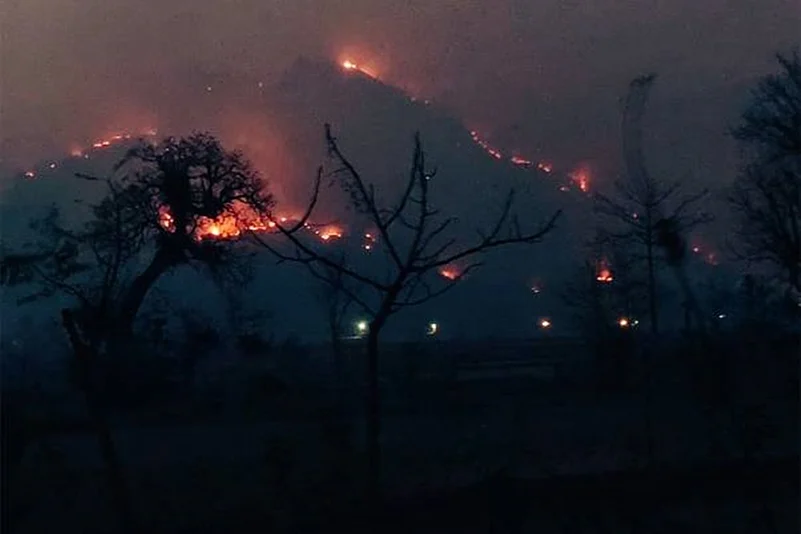The Simlipal forest reserve area frequently witnesses forest fires during dry weather conditions. The sudden onset of summer from February acted as a perfect fuel for the rise in a wildfire.
What is the Simlipal Biosphere reserve?
Situated in Odisha’s Mayurbhanj district, Similipal is a national park and a tiger reserve. Its name is derived from ‘Simul’ (silk cotton) tree. The government of India on June 22, 2004, declared Similipal and the adjoining areas a biosphere reserve.
The forest area is the abode of 94 species of orchids and about 3,000 species of plants. The identified species of fauna include 12 species of amphibians, 264 species of birds, 29 species of reptiles, and 42 species of mammals, all of which collectively highlight the biodiversity richness of Similipal. Sal is a dominant tree species.
How intense was the fire?
As per Maloth Mohan, the Regional Conservator, a total of 399 fire points have been identified in the fringe areas bordering the forest, close to the villages. “All of them have been attended to, and the fire is now brought under control,” he told The Indian Express.
Is Simlipal forest fire-prone?
The forest area remains vulnerable to forest fires during Autumn. It is a recurrent annual phenomenon, however, are also brought under control due to the short span of precipitation. The months of January and February witness rainfall of 10.8 and 21 mm, respectively. The last incident of a major forest fire was reported in 2015.
What causes the fire in Simlipal?
Natural factors such as lighting or even soaring temperatures can lead to fires. Man-made factors are also responsible to a great extent – Instances of poaching and hunting wherein the poachers set a small patch of forest on fire to divert the wild animals can lead to such fires.
Jungle areas are also set on fire by villagers to clear the dry leaves on the ground for easy collection of mahua flowers. Locals use these flowers to make a drink that is addictive in nature.
Villagers also burn patches of sal trees for better growth.
This year, along with man-made factors, an advanced heatwave with the early onset of summer further deteriorated the condition.
















